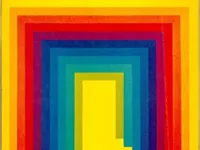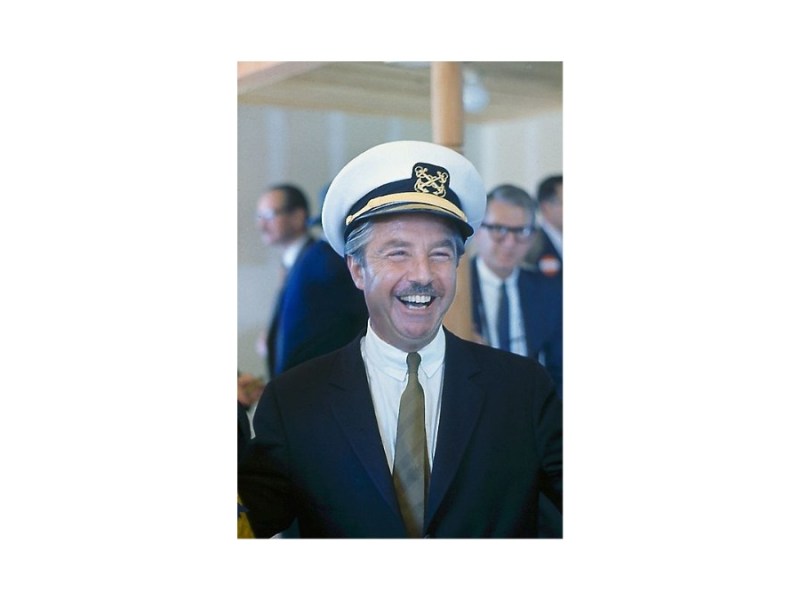When the Frank Sinatra film on drug addiction, “The Man With The Golden Arm” opened, a Saul Bass poster dominated the cinema billboards. No words, only artwork- a jagged arm. Saul Bass produced designs that were part of American modernism’s visual language in the late 1950s and early 1960s. Since then, his work on the “Anatomy of a Murder” (1959) has been plagiarised. The graphics he designed, however, used the most straightforward and most traditional techniques-silhouette. It’s the basic icon form, and Bass was a master of the form.
Background
Born in New York, Bass studied at the Art Student League and with Gyorgy Kepes at Brooklyn College. Kepes, a leading designer in his own right, had worked in Berlin and, having come to the US with Moholy-Nagy, worked with him at the New Bauhaus in Chicago. After freelancing, Bass moved to Los Angeles as an advertising art director in 1946. He brought an award from the New York Art Directors’ Club. Competing against conventionally commercial work, Bass had produced an advertisement in an impeccably modern movement idiom for Tylon Cold Wave (“contains TYO”). His first professional contribution was introducing to Californian commercial and corporate design East Coast modern as practised by its leaders, Lester Beall and Paul Rand.
By 1950 Bass had opened his own office. From here flowed a stream of new logos, AT&T (Bell System), Quaker (Oats) and Warner Communications. Saul Bass Associates also did work for airlines, including United and Continental. Such corporate identity work is alarming in its detail, its cost and its demands. In a drive to win Pacific Far East routes, Continental had to find a badge that was culturally neutral but memorable. Bass provided it and published its application not only on aircraft and vehicles but also on the caps of ground staff, in-flight blankets, paper mugs, T-shirts and protective clothing, sugar sachets, baggage tags and tickets.

Opening Titles
The opening title sequence of West Side Story is breathtaking in its elegance and simplicity. Saul Bass, their Creator, was a master. He carries the audience forward with what ostensibly are just graphic elements. From the first moments, your attention is aroused by the shrill, sharp whistle call. The screen opens to a vivid yellow background with black vertical lines coming into focus. Without rushing you, the iconic Bernstein composition carries you effortlessly along. If the whistle did not get your attention, the screen abruptly changes to a vivid “red” like a theatre light turning on—the pace of the music changes and the screen changes to a beautiful grape colour.
The move towards cooler colours reflects the shift in the soundtrack’s mood. I do not want it to end. I notice that slowly the vertical lines are shapeshifting, or is it my imagination? The music quickens, and the colours warm up, turning orange and staying in this state for some time. The titles and music are moving forward together, almost like a dance. The pace of the music slows the screen changes to green and blue. The blue background has taken hold, and the screen begins to pan out with the title “West Side Story” positioning itself at the bottom of the screen. By the time the music has arrived at its finale. The vertical lines have transformed into the skyscrapers of a beautiful aerial shot of 1960s Lower Manhattan.
Credits
The closing sequence contrasts sharply with the conventional ending credits that most films of the era used. Rather than scroll vertically before you, the camera moves and closes in on a graffiti-covered wall. The camera pauses and then moves onto the appropriate credit of interest and then moves out and continues its journey. There are still vertical movements. However, the camera is finding the text rather than just presenting itself—the wall changes to a crowded and cluttered confusion of text and meaningless scribble. The viewer’s interest has already been piqued, and one is actively looking for any legible text. The movement of the camera, while helpful still allows you to discover the film credits by yourself.
More on American Graphic Design
Luba Lukova: The Power of Visual Metaphor in Design
Luba Lukova, a New York-based artist from Bulgaria, creates impactful artwork addressing social issues like justice and freedom through minimalist…
Keep readingThe Enigma of Apple’s Logo: A Chronicle of Unveiling
Apple’s logo, known worldwide, conceals a fascinating history of simplicity and innovation. From Newton to the iconic bitten apple, its…
Keep reading“HERBERT BAYER: Recent Works. Jan.-Feb. 1971” Exploring the Legacy
Herbert Bayer, a Bauhaus master, left a mark in modern art and design. “HERBERT BAYER: Recent Works” offers insights into…
Keep readingThe End of an Era: Fruit Stripe Gum
A Colorful Legacy in Packaging Design Fruit Stripe Gum, a vibrant icon in the world of confectionery, has announced its…
Keep readingWalter Landor (1913 – 1995) Leader in Corporate Identity
Walter Landor, a prominent corporate identity and brand design expert, revolutionized branding through innovative techniques and pioneering “Total Design” philosophy.…
Keep readingWilliam Dwiggins (1880 -1956) – Typographer and Design All-rounder
William Addison Dwiggins, an American type designer, and typographer known for his versatile talents in illustration, book design, and typeface…
Keep readingPeace Poster by Luba Lukova
Peace was first published as Lukova’s visual commentary on the Op-Ed page of The New York Times, and later the…
Keep readingUnderstanding Paul Rand’s Corporate Branding Genius
Paul Rand was a pioneering graphic designer known for iconic corporate logos and influential design principles. His work spanned over…
Keep readingWalter Allner (1906–2006), an American Painter and Designer
Walter Allner, a Bauhaus-trained designer, merged Modernist principles with American aesthetics, influencing graphic design through magazine covers, teaching, and innovative…
Keep readingDan Friedman: American Graphic and Furniture Designer
Dan Friedman (1945–1995) was a pioneering graphic designer, artist, and educator, challenging traditional norms of design and leaving a dynamic…
Keep readingAlexey Brodovitch: Revolutionizing Magazine Design
Alexey Brodovitch (1898 – 1971) was an American/Russian graphic designer and magazine art director. Alexey Brodovitch was born in Russia…
Keep readingAlexander Girard (1907 – 1993) American Interior, & Textile Designer
Alexander Girard (1907-1993) was a versatile designer known for his work with Herman Miller, influence of folk art, and diverse…
Keep readingHerb Lubalin: Innovator and Iconoclast of American Graphic Design
Herb Lubalin, a prominent American typographic designer, mastered photography and illustration despite being color-blind and left-handed. He recognized for revolutionizing…
Keep readingIntroducing Komolab Art of Useful Aesthetics
Restrained design meets function. “A pursuit in the art of useful aesthetics.” This is the stated goal of Louisiana-based brand…
Keep readingMilton Glaser (1929 – 2020) American Graphic Designer
Co-founder of Push Tin Studios.
The colourful posters of designer-illustrator Milton Glaser epitomise an era for the Woodstock generation. His…
Keep readingWilliam Dwiggins (1880-1956) – Typographer and All-Rounder
William Addison Dwiggins (1880-1956) was a versatile American designer known for typefaces like “Metro” and “Electra,” widely used in books…
Keep readingMassimo Vignelli, Designer of Subway Maps to Corporate Logos
Massimo Vignelli and his wife Leila, an architect, were considered a husband and wife team credited with introducing restrained, European…
Keep readingBeauty through the Eyes of Stefan Sagmeister and Jessica Walsh
Stefan Sagmeister’s design philosophy emphasizes emotional connections, authenticity, playfulness, and transformative impact, challenging conventional aesthetics while integrating personal narratives and…
Keep readingNomikai Adds A Chic Twist To Rosé In A Can
Nomikai, designed by Dutch East Design, elevates rosé in a can to a whole new level. Nomikai should be the…
Keep readingThe Timeless Allure of Route 66: A Testament to Americana Design
Route 66’s signage, featuring vibrant typography, is an iconic symbol of a bygone Americana. Despite the fading of this historic…
Keep readingIf you enjoyed reading this post, you might also be interested in reading;
Milton Glaser (1929 – 2020) American Graphic Designer – Encyclopedia of Design
Milton Glaser (1929-2020) was a graphic designer from the United States. He was born and raised in New York, where he was active professionally. He studied at the Cooper Union in New York. The colourful posters of designer-illustrator Milton Glaser epitomise an era for the Woodstock generation.
Jan Tschichold (1902 – 1974) – Swiss Typographer and Graphic Designer – Encyclopedia of Design
At Encyclopedia.Design, we are fascinated by all aspects of design, both current and historical. It is important to recognise the influential designers who have paved the way. Jan Tschichold (1902 – 1974), is a typographic genius. Tschichold was first introduced to me at Shillington College, where I studied Graphic Design.
Discover more from Encyclopedia of Design
Subscribe to get the latest posts sent to your email.



















